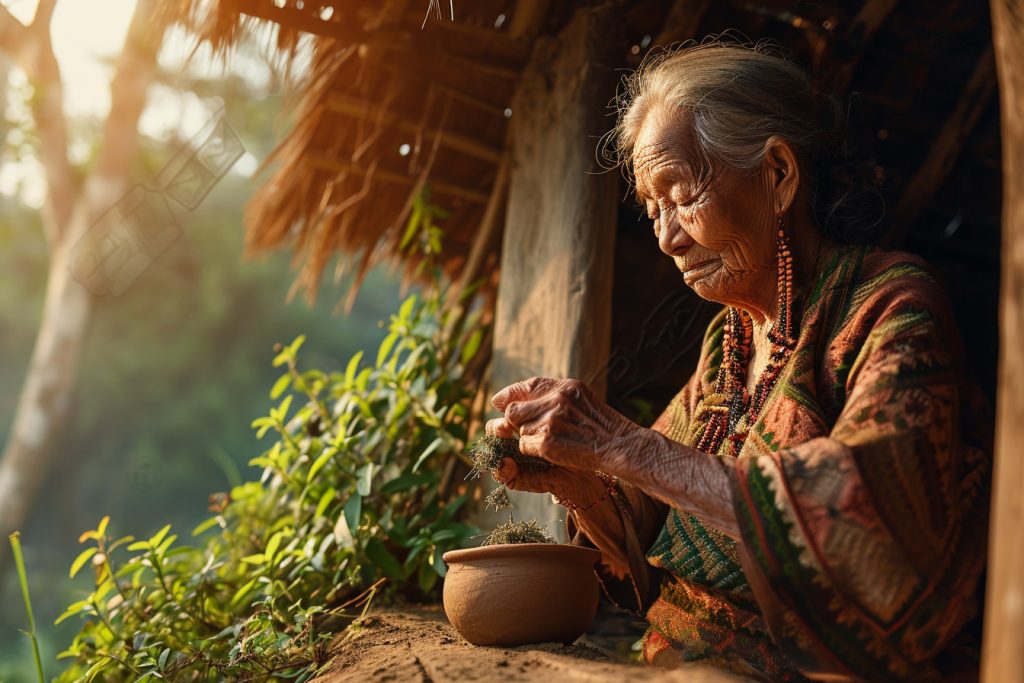Take a nostalgic journey with us as we uncover the mysterious and fascinating world of ancient healing practices. From the lush depths of the Amazon rainforest to the mystical essence of ancient Egyptian tombs, the quest for health and healing has been a universal goal across all civilizations. Each culture brought its own unique brand of medicine, merging the spiritual with the practical, the natural with the supernatural. This article delves into the old-school cures and time-tested health wisdom that have laid the groundwork for modern medical practices. You might find that these ancient healing ways still resonate with and influence contemporary healthcare.
A Trip Back in Time: Healing Roots
Long before pharmacies and prescriptions, our ancestors turned to the natural world for relief from ailments and diseases. This wasn’t medicine as we know it today—it was a deeply intuitive, trial-and-error process intertwined with the environment and spiritual beliefs. Ancient cultures such as the Sumerians, Egyptians, Chinese, and Greeks cultivated vast knowledge of medicinal plants and herbs, which they documented extensively in papyrus scrolls, bamboo slips, and stone tablets. These civilizations recognized the body’s power to heal itself, a concept that is ironically resurging in modern wellness circles as a "revolutionary" approach.
Traditional healing systems like Ayurveda and Traditional Chinese Medicine (TCM) have been in continuous practice for over two thousand years, advocating for a balanced lifestyle and using holistic strategies. Ayurveda’s focus on body types (doshas) and TCM’s emphasis on energy flow (qi) demonstrate a sophisticated understanding of personal health that predates modern advancements. These ancestral roots of healthcare show us that looking back might be just as important as looking forward when it comes to our well-being.
Nature’s Medicine Cabinet Unveiled
In every corner of the globe, nature has provided a bountiful dispensary. Ancient healers had a profound respect and knowledge of the flora and fauna that surrounded them. They knew which bark would reduce fever, which berries could purify blood, and which roots could soothe a toothache. This partnership with earth’s apothecary was essential for survival, as plants like willow bark (which contains a form of salicylic acid, the active ingredient in aspirin) were used to treat pain and inflammation.
This botanical wisdom was not just limited to physical ailments; many cultures also had a rich knowledge of psychoactive plants that were used in spiritual healing and rituals. The use of peyote, ayahuasca, and psilocybin mushrooms, for instance, provided not just physical healing but psychological and emotional catharsis. These natural substances were, and some still are, considered sacred tools for connecting with the divine and the inner self, highlighting the holistic approach of our ancestors toward health and medicine.
From Rituals to Remedies: Ancient Cures
Beyond the physical botanical remedies, ancient healers often employed elaborate rituals and ceremonies as part of the healing process. These practices were grounded in the belief that health was as much about the spiritual and emotional state as it was about the physical body. The shamans of indigenous tribes would enter trances, communicate with spirits, and perform energy cleansing to restore health to the unwell. The Egyptians, meanwhile, had complex rituals involving chanting, amulets, and incantations to the gods to invoke healing energies.
The transition from magical rites to structured remedies has been gradual but evident. Ancient Greeks, such as Hippocrates, often deemed the father of modern medicine, started to transition the focus to clinical observations and natural causes of diseases. Procedures like bloodletting, cupping, and panchakarma were developed to remove toxins from the body, procedures surprisingly still in use in various forms today. The old paradigm that integrated environment, body, spirit, and community in treatment shows us that ancient cures were about treating the person, not just the disease, an insight that is regaining its value in holistic health practices in the 21st century.
As we look back at these old-school cures, we’re reminded that the legacy of ancient healing is not only about the remedies left behind but the philosophy that accompanied them. Our journey through the world’s ancient healing ways reveals a tapestry of wisdom, where health is a delicate balance of the physical, spiritual, and natural world. Although we live in an age of unprecedented medical technology, the roots of healing from our past still hold meaningful lessons and a wealth of knowledge for us to rediscover and perhaps integrate into our modern lives. Next time you enjoy a cup of herbal tea or a meditation session, remember that these practices are echoes of our shared ancient quest for wellness and balance.









